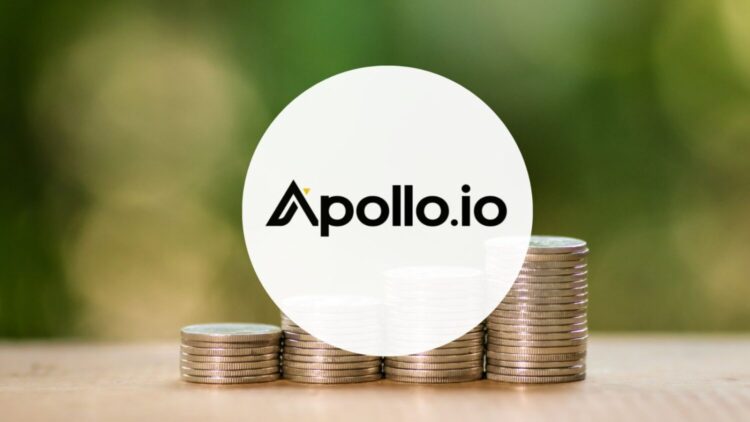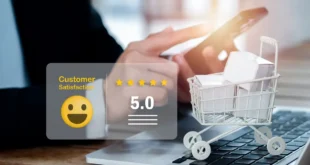Some companies treat data extraction like an all-you-can-eat buffet – piling their plates high, paying top dollar, and then realizing half the food goes cold before anyone touches it. Others manage to get the same nutrients at a fraction of the cost.
So why do some teams still burn budgets while others keep costs lean? The short answer: the choice of tools.
Let’s break down how Apollo.io stacks up against other platforms when it comes to data extraction costs.
Why cost efficiency in data extraction matters

In B2B sales, every dollar saved on lead sourcing can go back into areas that actually grow the pipeline, ads, sales reps, or that long-overdue CRM upgrade your team keeps ignoring. Data extraction platforms have become the middlemen of prospecting, and their pricing models can make or break your ROI.
Here’s the kicker: the same volume of leads can cost wildly different amounts depending on the platform. That’s why a proper comparison is more than number crunching, it’s about spotting the hidden costs that slip through the cracks.
The Apollo.io approach to costs
Apollo.io is often the first stop for teams who want volume and reach. Its pricing scales with seat counts and data access, which means a small team can start at a reasonable rate, but bigger teams may see costs balloon as they add users.
Now, here’s where it gets interesting. Some teams using third-party scrapers alongside Apollo.io have reported cutting lead generation costs by supplementing Apollo with tools like Apollo Scraper.
Instead of paying premium subscription tiers, they combine Apollo’s database with external extraction methods to bring costs down. Think of it like brewing your own coffee instead of buying it from the café every morning, you’re still caffeinated, but your wallet isn’t empty.
Comparing Apollo.io with other major players

Different platforms come with their own quirks. Some charge per contact exported, others per seat, and a few sneak in “data enrichment” fees that feel like ordering a burger only to find fries cost extra.
| Platform | Pricing Model | Strength | Cost Risks |
| Apollo.io | Subscription per seat with data limits | Large verified database, CRM integrations | Costs rise quickly with team growth |
| ZoomInfo | Premium enterprise contracts | Depth of contact details | Very high entry cost, long contracts |
| Lusha | Credits-based | Flexible for smaller teams | Can burn credits fast |
| Scraper tools | Pay-once or low monthly | High ROI for raw extraction | Less polished, needs some setup |
This table shows the spread. Some solutions look fancy but lock you in, while others keep things lean but require a bit more DIY.
The hidden costs nobody talks about

When companies compare platforms, they often stop at sticker price. But what about:
- Export limits – Platforms cap the number of leads you can pull, nudging you toward pricier plans.
- Enrichment add-ons – Want phone numbers, job titles, or LinkedIn links? Surprise, that’s an upgrade.
- Seat creep – You start with 3 users, but suddenly marketing, SDRs, and managers all want access.
It’s like signing up for a gym because the monthly fee looks cheap, only to realize classes, lockers, and towels all cost extra.
Where Apollo.io shines
Let’s give credit where it’s due. Apollo.io does a solid job balancing usability with data accuracy. Sales teams love its integrations with CRM tools, email sequences, and reporting dashboards. For many, the all-in-one platform saves time that might otherwise go into cobbling together multiple tools.
If your team values speed and structure over surgical cost-cutting, Apollo.io often makes sense. It’s like paying for a meal kit service, you might spend more, but you also get convenience.
Where alternative tools pull ahead

Some companies are perfectly happy ditching bells and whistles to get raw data faster and cheaper. Scraper tools, for example, give you flexibility without subscription creep. Sure, they require a bit more setup, but they’re ideal if:
- You only need data in bursts (campaign-based prospecting).
- Your team already has workflows for cleaning and enriching leads.
- You don’t want long-term contracts eating into budget.
It’s not as slick as Apollo.io, but it’s closer to shopping wholesale rather than buying one item at a time.
Cost comparison in practical terms
So what does this look like for a sales team of 10 SDRs running outreach every month?
- Apollo.io: Around $12,000–$15,000 yearly once you factor in seats and higher-tier plans.
- ZoomInfo: Often $30,000+ with long-term contracts.
- Scraper tools: Between $500–$2,000 yearly if paired with existing tech stack.
- Lusha: $3,000–$5,000 yearly but can get pricey at scale.
The gap is massive. That’s why CFOs raise eyebrows when sales leaders insist on premium tools without exploring hybrids.
When to choose Apollo.io

Apollo.io makes the most sense if:
- You need a structured, integrated workflow for outbound campaigns.
- Your team has multiple users who value convenience over cost.
- You want data accuracy to be managed in-house rather than DIY.
For high-velocity outbound teams, the convenience often justifies the spend.
When to mix or switch tools
A hybrid model, using Apollo.io for core data while bringing in scraper tools for volume, often gives the best of both worlds. It’s like having both a streaming service and a stack of DVDs; you don’t need to pay premium for everything when some things are just cheaper elsewhere.
Switch entirely if:
- You run lean operations with small SDR teams.
- Your campaigns are project-based, not continuous.
- You’re tired of being locked into contracts and want flexibility.
Saving money is smart, but going bargain-basement with data tools can backfire. Low-quality data means wasted emails, bounces, and domain reputation issues. Suddenly, the money you saved upfront costs you more in lost deliverability. Balance is key, don’t buy champagne leads on a beer budget, but don’t settle for stale contacts either.
Final thoughts
Apollo.io has carved out its place as a reliable, integrated option for teams that can afford structured pricing. But alternatives, and especially hybrids, give smart operators room to cut costs without cutting quality. The real trick isn’t finding the “cheapest” tool; it’s figuring out which setup saves money while still fueling your pipeline.
In other words, spend wisely. Because nothing hurts more than paying enterprise prices and still watching your reps ask, “So… where are the leads?”
 Hi Boox Popular Magazine 2025
Hi Boox Popular Magazine 2025



